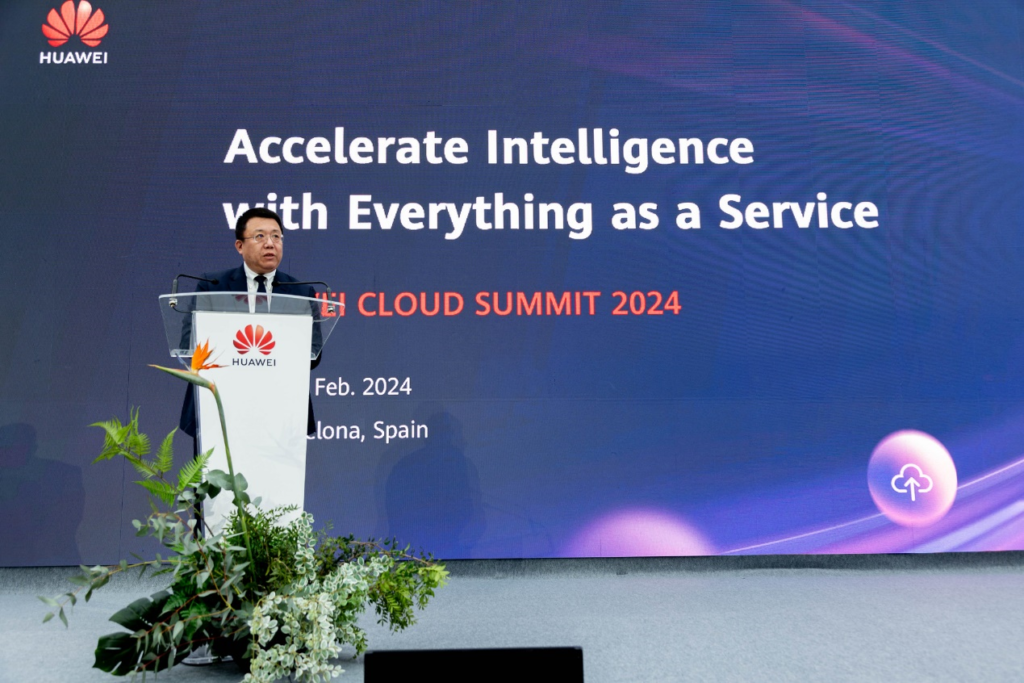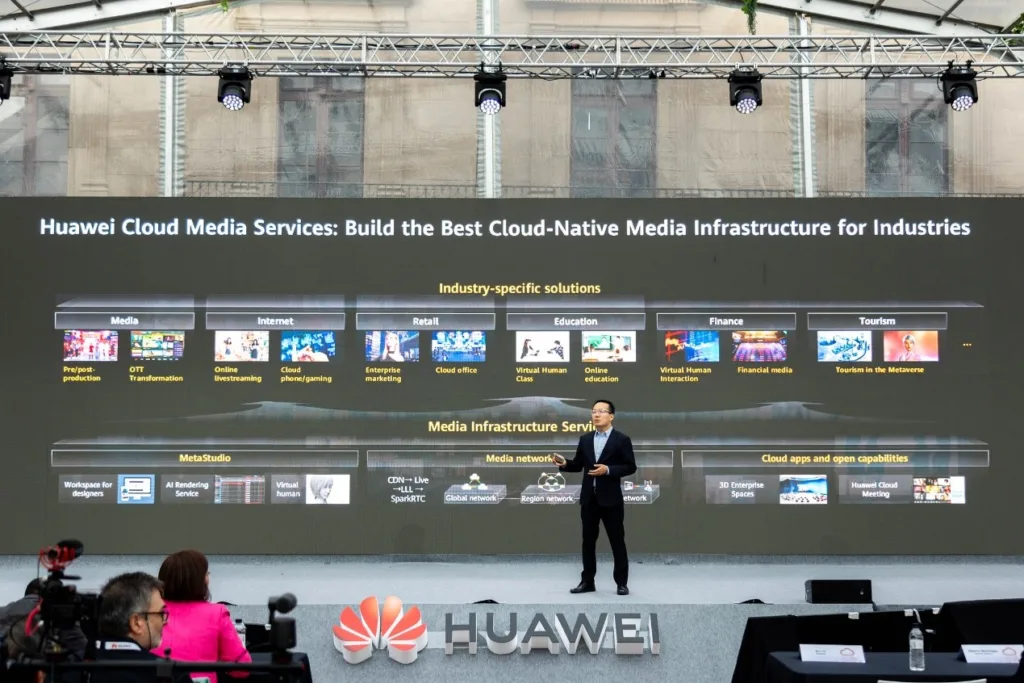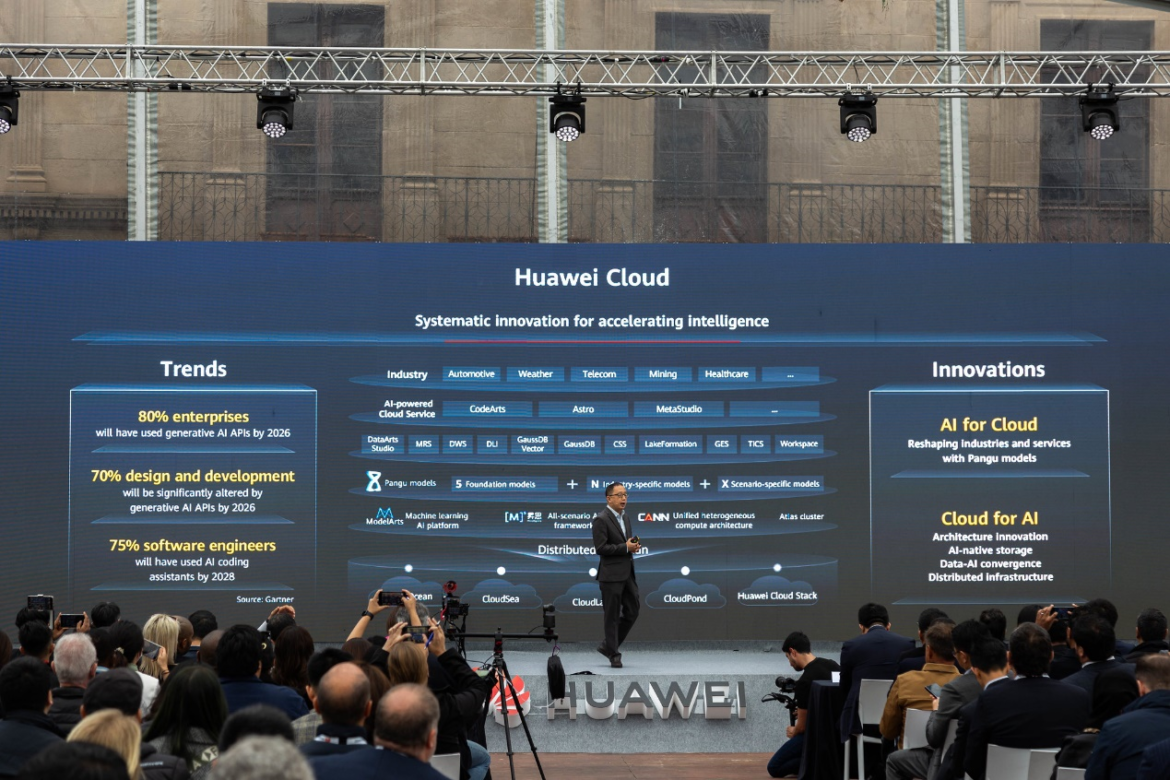Barcelona, Spain, 27 February 2024: The Mobile World Congress 2024 opened in Barcelona with the Huawei Cloud Summit under the theme of “Accelerate Intelligence with Everything as a Service”.
The Huawei Cloud leadership presented the latest AI-oriented innovations and extensive industry expertise of Pangu models designed to provide an AI-ready infrastructure tailored to each industry for a faster journey towards intelligence.
As intelligence opens up new opportunities, Huawei is committed to developing ICT infrastructure and solutions that unlock the full potential of intelligence. As one of the fastest growing cloud service providers globally, the focus is on making AI an engine of growth for cloud computing.

To that end, the foundation models redefine production, interaction, service paradigms, and business models for traditional applications.
There in a global need for collaborative, heterogeneous computing architecture, cloud native compute with superlative performance, mass data storage, security compliance, lean governance, and flexible deployment.
As foundation models scale into wider use, cloud computing nurtures the innovation and development of AI models. By integrating AI with cloud, Huawei Cloud is leading this evolution.
The integration of cloud native and AI technologies is a strategic leap that would accelerate the global implementation and advancement of AI.
During the MWC 2024, the Huawei Cloud Summit featured keynote speeches from Bruno Zhang, CTO of Huawei Cloud, Jamy Lyu, President of Huawei Cloud Media Services, Dr. Nikos Ntarmos, Director of the Database Lab of Huawei Central Software Institute, and William Fang, Chief Product Officer of Huawei Cloud amongst others, showing the systematic innovation and industry practices of Huawei Cloud in the AI era, including the Pangu Models.

The Pangu Models are structured for to tackle big challenges head-on and address the concerns of customers in industries such as customer operations, product research and development, software engineering, production and supply, and marketing.
The Pangu Models are dedicated to building big models and capability sets for industries such as finance, government, manufacturing, mining, meteorology, and railway. They combine industry knowledge and big model capabilities to reshape industries, essentially giving each industry, each enterprise, and each person their own expert assistant to make work more efficient and easier.
On July 6, 2023, research results about Pangu Weather Model were published on Nature and garnered significant attention. After that, the European Centre for Medium-Range Weather Forecasts (ECMWF) and China Meteorological Administration (CMA) started their journey with Pangu.
This Pangu model had played its part in predicting cold wave and typhoon paths, and one example is its precise prediction of the cold wave in Finland in February 2023. The Pangu weather model is the first AI model boasting higher prediction accuracy than conventional NWP methods.
In the past, predicting the trajectory of a typhoon for the next 10 days took 4 to 5 hours on a high-performance cluster of 3,000 servers. Now, Pangu can do that in only 10 seconds on a single server. Pangu Weather Model has also shown exceptional accuracy in predicting the trajectories of typhoons across the Western Pacific region.
William Fang, Chief Product Officer at Huawei Cloud, emphasized the increasing demands on various aspects of cloud infrastructure due to the rapid advancement of AI and foundation models. Customers want collaborative heterogeneous computing architecture, cloud native compute with superlative performance, mass data storage, security compliance, lean governance, and flexible deployment.
As foundation models scale into wider use, cloud computing nurtures the innovation and development of AI models. It is only by integrating AI with cloud that progress in intelligence is possible.




